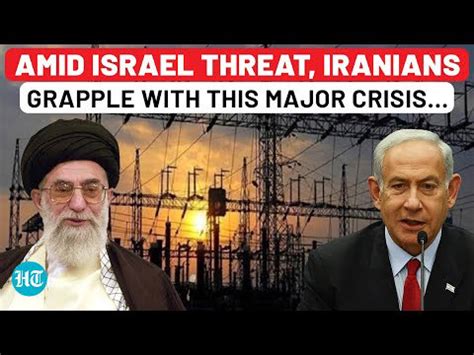
A series of large, unidentified Chinese transport planes have recently landed in Iran, sparking speculation and raising concerns among observers about the nature of their cargo and the deepening ties between Beijing and Tehran.
A flurry of speculation has erupted following the arrival of several large, unidentified Chinese transport aircraft in Iran. While the specific contents of the planes remain unknown, the event has drawn increased scrutiny due to the already complex geopolitical landscape surrounding Iran and the increasingly close relationship between China and Iran.
The planes, described as large transport aircraft, landed at an undisclosed location within Iran, triggering a wave of inquiries into their mission and cargo. Neither Chinese nor Iranian officials have released specific details regarding the purpose of these flights, leading to a proliferation of theories and concerns among international observers. The lack of transparency has fueled speculation about potential military cooperation, economic agreements, or technology transfers between the two nations.
The timing of these flights coincides with heightened tensions in the Middle East and growing international concerns over Iran’s nuclear program and regional activities. Furthermore, the strengthening alliance between China and Iran is seen by some as a direct challenge to U.S. influence in the region. “The arrival of these planes raises legitimate questions about the depth and nature of the Sino-Iranian partnership,” said a security analyst familiar with the matter.
Adding to the intrigue, public tracking data for the aircraft was reportedly obscured, making independent verification of their origin and flight paths difficult. This lack of transparency has only amplified suspicions and fueled calls for greater clarity from both Beijing and Tehran.
China and Iran have been expanding their economic and strategic ties in recent years, driven by shared interests and a mutual desire to counter U.S. influence. China is a major trading partner of Iran, and the two countries have engaged in joint military exercises and collaborations in various sectors, including energy and infrastructure.
The ambiguity surrounding the recent plane landings underscores the need for careful monitoring of Sino-Iranian relations and their potential implications for regional stability and international security.
Growing Sino-Iranian Partnership
China and Iran’s relationship has solidified over the past few decades, evolving into a strategic partnership encompassing economic, political, and military dimensions. Several factors contribute to this deepening alliance.
Economically, China is a significant trading partner for Iran, particularly in the energy sector. Despite international sanctions, China has continued to import Iranian oil, providing a crucial lifeline for the Iranian economy. This economic cooperation is underpinned by long-term agreements, such as the 25-year comprehensive cooperation agreement signed in 2021, which aims to expand Chinese investments in Iran’s infrastructure, energy, and other sectors.
Politically, both countries share a common stance on several global issues, often aligning their positions in international forums. They both advocate for a multipolar world order, challenging what they perceive as U.S. hegemony. This shared vision has led to increased diplomatic coordination and mutual support on issues ranging from human rights to nuclear proliferation.
Militarily, China and Iran have engaged in joint military exercises, signaling closer security cooperation. These exercises, often conducted in the Gulf of Oman, demonstrate a shared interest in maritime security and countering potential threats in the region. China has also been a supplier of military technology to Iran, though the extent of this cooperation remains a sensitive issue due to international sanctions and restrictions.
Geopolitical Implications
The strengthening ties between China and Iran have significant geopolitical implications for the Middle East and beyond. The alliance poses a challenge to the U.S.’s influence in the region and could potentially reshape the balance of power.
For the United States, the growing Sino-Iranian partnership presents a complex challenge. The U.S. has long sought to isolate Iran through sanctions and diplomatic pressure, but China’s continued engagement with Tehran undermines these efforts. The U.S. must now contend with a scenario where Iran has a powerful economic and political backer in China, making it more difficult to exert influence and enforce sanctions.
For regional actors, the implications are equally profound. Countries like Saudi Arabia and Israel, which view Iran as a major threat, are concerned about the potential for increased Iranian power projection and regional destabilization. The partnership with China could provide Iran with the resources and capabilities to pursue its regional ambitions more aggressively.
Speculation and Concerns
The arrival of the Chinese transport planes in Iran has triggered a range of speculations and concerns, focusing on the potential nature of their cargo and the broader implications for regional security.
- Military Equipment: One of the primary concerns is that the planes may be carrying military equipment, potentially including advanced weapons systems, surveillance technology, or components for Iran’s missile program. This would raise alarms given Iran’s ongoing efforts to enhance its military capabilities and its involvement in regional conflicts.
- Economic Aid: Another possibility is that the planes are carrying economic aid or supplies to support the Iranian economy, which has been severely impacted by international sanctions. This could include essential goods, medical supplies, or equipment for infrastructure projects.
- Technology Transfer: There are also concerns about the potential for technology transfer, particularly in areas such as artificial intelligence, cyber security, and advanced manufacturing. This could help Iran enhance its technological capabilities and potentially circumvent international restrictions.
- Dual-Use Goods: The planes might be carrying dual-use goods, which have both civilian and military applications. These items could be used for legitimate purposes but also diverted to military programs, making it difficult to assess their true nature and impact.
Lack of Transparency
The lack of transparency surrounding the arrival of the Chinese planes has amplified these concerns and fueled suspicions. The fact that public tracking data was reportedly obscured only adds to the mystery and raises questions about the intentions behind these flights.
Transparency is crucial for building trust and ensuring that international norms and regulations are upheld. When information is withheld or obscured, it can lead to misunderstandings, miscalculations, and increased tensions.
Expert Opinions
Experts have weighed in on the situation, offering their insights and analysis.
“The arrival of these planes raises legitimate questions about the depth and nature of the Sino-Iranian partnership,” said a security analyst familiar with the matter. “It is essential to closely monitor these developments and understand the potential implications for regional stability.”
Another expert noted that “China’s growing engagement with Iran is a strategic move aimed at expanding its influence in the Middle East and challenging U.S. dominance. The planes could be carrying anything from military equipment to economic aid, but the lack of transparency is concerning.”
Iran’s Perspective
From Iran’s perspective, the partnership with China is seen as a strategic imperative for several reasons.
First, it provides Iran with a crucial economic lifeline in the face of international sanctions. China’s continued imports of Iranian oil and investments in Iran’s infrastructure help to sustain the Iranian economy and mitigate the impact of sanctions.
Second, the partnership with China enhances Iran’s political and diplomatic leverage. China’s support in international forums and its willingness to challenge U.S. policies provide Iran with a valuable ally.
Third, the partnership with China strengthens Iran’s security and military capabilities. While the extent of military cooperation remains a sensitive issue, the exchange of technology and expertise can help Iran modernize its armed forces and enhance its defense capabilities.
China’s Perspective
From China’s perspective, the partnership with Iran is driven by several strategic considerations.
First, it provides China with access to Iran’s vast energy resources, helping to meet its growing energy needs. China is the world’s largest energy consumer, and Iran is a major oil producer, making the two countries natural partners.
Second, the partnership with Iran expands China’s influence in the Middle East, a region of strategic importance due to its energy resources and geopolitical dynamics. China seeks to play a more prominent role in the region and challenge U.S. dominance.
Third, the partnership with Iran aligns with China’s broader vision of a multipolar world order. China believes that the world should not be dominated by a single superpower and that countries should have the freedom to pursue their own interests without interference.
Potential Scenarios
Several potential scenarios could unfold in the coming months and years, depending on how the Sino-Iranian partnership evolves.
- Increased Military Cooperation: China and Iran could deepen their military cooperation, conducting more joint exercises, exchanging more technology and expertise, and potentially engaging in joint weapons development programs.
- Expanded Economic Ties: China could further increase its investments in Iran’s infrastructure, energy, and other sectors, helping to boost the Iranian economy and deepen its dependence on China.
- Greater Diplomatic Coordination: China and Iran could coordinate their diplomatic efforts more closely, aligning their positions on key international issues and challenging U.S. policies more assertively.
- Escalation of Tensions: The growing Sino-Iranian partnership could lead to increased tensions with the United States and its allies, potentially resulting in sanctions, diplomatic confrontations, or even military conflicts.
- Regional Instability: The partnership could contribute to regional instability by emboldening Iran to pursue its regional ambitions more aggressively and potentially provoking a response from its rivals.
Monitoring and Analysis
Given the potential implications of the Sino-Iranian partnership, it is essential to closely monitor and analyze these developments. This includes tracking economic ties, military cooperation, diplomatic coordination, and technological exchanges.
Governments, international organizations, think tanks, and media outlets all have a role to play in providing accurate and timely information and analysis. Transparency and open communication are crucial for building trust and ensuring that international norms and regulations are upheld.
The recent arrival of the Chinese transport planes in Iran serves as a reminder of the complex and evolving geopolitical landscape in the Middle East and the growing influence of China in the region. Understanding the dynamics of the Sino-Iranian partnership is essential for navigating the challenges and opportunities that lie ahead.
The incident underscores the importance of maintaining vigilance and fostering international cooperation to promote peace, stability, and security in the region.
The Role of Sanctions
International sanctions have played a significant role in shaping the relationship between China and Iran. Imposed by the United States and other countries, these sanctions aim to curb Iran’s nuclear program and limit its support for regional proxies. However, they have also inadvertently pushed Iran closer to China.
By restricting Iran’s access to global markets and financial systems, sanctions have made it more reliant on China as a trading partner and investor. China, in turn, has been willing to engage with Iran despite the sanctions, viewing it as an opportunity to expand its influence and secure access to Iranian energy resources.
The effectiveness of sanctions in achieving their intended goals is a subject of ongoing debate. While they have undoubtedly hurt the Iranian economy, they have also created incentives for Iran to seek alternative partners and develop its own indigenous capabilities.
Cybersecurity and Technology
Cybersecurity is another area of growing concern in the context of the Sino-Iranian partnership. Both countries have been accused of engaging in cyber espionage and cyberattacks, and there are concerns that they could collaborate in this area.
China has a highly developed cyber capability, and Iran has also made significant strides in recent years. Collaboration between the two countries could enhance their ability to conduct cyber operations and potentially pose a threat to other countries.
Technology transfer is another sensitive issue. There are concerns that China could provide Iran with advanced technologies that could be used for military purposes or to circumvent international restrictions.
The Future of the Partnership
The future of the Sino-Iranian partnership is uncertain, but it is likely to continue to evolve and deepen in the coming years. Several factors will shape the trajectory of the relationship, including:
- U.S. Policy: U.S. policy toward Iran and China will have a significant impact on the relationship. A more confrontational approach could push Iran and China closer together, while a more conciliatory approach could create opportunities for de-escalation and cooperation.
- Regional Dynamics: Regional dynamics in the Middle East will also play a role. Escalating tensions could lead to increased cooperation between China and Iran, while a more stable environment could reduce the need for such cooperation.
- Economic Factors: Economic factors, such as the global energy market and the state of the Iranian economy, will also influence the relationship. China’s energy needs and Iran’s economic challenges will continue to drive cooperation.
- Internal Politics: Internal political developments in both China and Iran could also affect the relationship. Changes in leadership or policy could lead to shifts in priorities and strategies.
Conclusion
The arrival of the Chinese transport planes in Iran is a reminder of the complex and evolving geopolitical landscape in the Middle East and the growing influence of China in the region. The Sino-Iranian partnership is a multifaceted relationship with significant implications for regional stability and international security.
Understanding the dynamics of this partnership is essential for navigating the challenges and opportunities that lie ahead. Policymakers, analysts, and the public must remain vigilant and informed about these developments to promote peace, stability, and security in the region.
The need for transparency and open communication cannot be overstated. By fostering greater understanding and cooperation, the international community can work together to address the challenges posed by the Sino-Iranian partnership and ensure a more stable and prosperous future for the Middle East.
The situation calls for continued monitoring, in-depth analysis, and diplomatic efforts to prevent any escalation of tensions and to promote a more cooperative and peaceful regional environment.
Frequently Asked Questions (FAQ)
1. What were the Chinese transport planes doing in Iran?
The exact purpose of the flights remains unconfirmed. There is speculation that they could be carrying military equipment, economic aid, technology, or dual-use goods. Neither Chinese nor Iranian officials have provided specific details, contributing to the uncertainty.
2. Why is the arrival of these planes causing concern?
The arrival of the planes raises concerns due to the already tense geopolitical situation in the Middle East, the growing ties between China and Iran, and the lack of transparency surrounding the flights. The potential for military cooperation, technology transfer, or economic support that could undermine international sanctions are all factors contributing to the unease.
3. How strong is the relationship between China and Iran?
The relationship between China and Iran has been strengthening in recent years, encompassing economic, political, and military dimensions. China is a major trading partner of Iran, particularly in the energy sector, and the two countries have engaged in joint military exercises and collaborations in various sectors. They also share a common stance on several global issues, often aligning their positions in international forums.
4. What are the potential implications of this situation for the United States?
The growing Sino-Iranian partnership presents a challenge to U.S. influence in the Middle East. It undermines U.S. efforts to isolate Iran through sanctions and diplomatic pressure. The U.S. must now contend with a scenario where Iran has a powerful economic and political backer in China, making it more difficult to exert influence and enforce sanctions.
5. What could be the long-term consequences of closer ties between China and Iran?
Long-term consequences could include a shift in the balance of power in the Middle East, increased Iranian power projection, potential regional instability, and heightened tensions with the United States and its allies. The Sino-Iranian partnership could also lead to increased military cooperation, expanded economic ties, and greater diplomatic coordination between the two countries.









